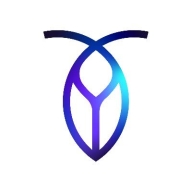

SAP HANA and CockroachDB compete in the database solutions category, each with distinct functionalities. CockroachDB may hold a competitive edge for businesses seeking a flexible, cost-effective distributed system.
Features: SAP HANA offers real-time processing, in-memory technology, and high data compression, making it ideal for high-performance demands and SAP application integration. Its strengths include analytics, supplier relationship management, and customizability. CockroachDB features distributed architecture, high availability, geo-replication, and PostgreSQL compatibility, well-suited for multi-region deployments.
Room for Improvement: SAP HANA needs enhancement in interface customization, cost reduction, and improved third-party integration. Users also seek better mobile technology support and more intuitive experiences for smaller enterprises. CockroachDB could benefit from enhanced PostgreSQL compatibility, refined disaster recovery features, and better handling of store processes at enterprise levels.
Ease of Deployment and Customer Service: SAP HANA supports on-premises, hybrid, and private cloud models, although its deployment can be complex. Customer service reviews vary, with some users citing slow support responses. CockroachDB is noted for its simpler deployment, terrific technical assistance, and efficient scalability, particularly in cloud settings.
Pricing and ROI: SAP HANA is often criticized for its high costs, perceived as prohibitive for SMBs, but its robust features provide significant ROI for large enterprises. Meanwhile, CockroachDB offers flexible, affordable pricing, catering to varied business sizes and praised for its cost-effectiveness, especially in smaller implementations.
We do not feel we're getting value for the investment due to the additional resources needed for integration and maintenance.
SAP HANA is a cost-saving solution that helps save money and serves as a time-saving solution that helps save time.
The issue was resolved efficiently.
The community support is better than the official SAP support.
While issues are resolved eventually, the first level of support is not as good as we would like.
When we raise a ticket for AWS or Azure issues, we find their support is very proactive, while SAP's support is quite passive.
Our operations have grown from a hundred data operations a day to as many in a couple of seconds.
There is enough scalability offered by SAP to meet our deployment needs.
The scalability rating is based on the ability to expand.
We recently faced customer data loss during the cluster handover or failover fallback.
We have not had any problems in the last seven to eight years.
Regarding stability, they are using legacy systems and have implemented SAP HANA.
For multi-region deployment, CockroachDB requires at least three plus replicas across data centers to achieve strong consistency across regions, which increases infrastructure costs including compute, storage, and networking.
The main issue is the ecosystem, which lacks the widespread support that SQL enjoys.
The setup process and deployment process for SAP HANA is complex.
Licensing costs with SAP HANA are very high.
It's a recurring subscription model, which is expensive compared to legacy systems with just a maintenance fee.
SAP is not a cheap company, and its licenses are expensive.
I would rate the price for SAP HANA as high.
CockroachDB's geo-distribution feature is superior to traditional databases.
This architecture allows for faster data processing and real-time analytics that were not possible with traditional databases.
The concept enhances speed, allowing the database to serve and move data quickly.
One of our dashboards using Excelsius was previously developed on normal BW on Oracle data, which took 10 minutes to open. After developing the same calculation views using those tables and replacing them with calculation views in Excelsius, the dashboard opened in seconds.
| Product | Market Share (%) |
|---|---|
| SAP HANA | 9.6% |
| CockroachDB | 4.2% |
| Other | 86.2% |


| Company Size | Count |
|---|---|
| Small Business | 7 |
| Midsize Enterprise | 1 |
| Large Enterprise | 5 |
| Company Size | Count |
|---|---|
| Small Business | 26 |
| Midsize Enterprise | 11 |
| Large Enterprise | 61 |
Cockroach Labs is the creator of CockroachDB, the cloud-native, resilient, distributed SQL database enterprises worldwide trust to run mission-critical AI and other applications that scale fast, avert and survive disaster, and thrive everywhere. It runs on the Big 3 clouds, on prem, and in hybrid configurations powering Fortune 500, Forbes Global 2000, and Inc. 5000 brands, and game-changing innovators, including OpenAI, CoreWeave, Adobe, Netflix, Booking.com, DoorDash, FanDuel, Cisco, P&G, UiPath, Fortinet, Roblox, EA, BestBuy, SpaceX, Nvidia, the USVA, and HPE. Cockroach Labs has customers in 40+ countries across all world regions, 25+ verticals, and 50+ Use Cases. Cockroach Labs operates its own ISV Partner Ecosystem powering Payments, Identity Management (IDM/IAM), Banking & Wallet, Trading, and other high-demand use cases. Cockroach Labs is an AWS Partner of the Year finalist and has achieved AWS Competency Partner certifications in Data & Analytics and Financial Services (FSI). CockroachDB pricing is available at https://www.cockroachlabs.com/pricing/
Vector, RAG, and GenAI Workloads
CockroachDB includes native support for the VECTOR data type and pgvector API compatibility, enabling storage and retrieval of high-dimensional embeddings. These vector capabilities are critical for Retrieval-Augmented Generation (RAG) pipelines and GenAI workloads that rely on similarity search and contextual embeddings. By supporting distributed vector indexing within the database itself, CockroachDB removes the need for external vector stores and allows AI applications to operate against a single, consistent data layer.
C-SPANN Distributed Indexing
At the core of CockroachDB’s vector search capabilities is the C-SPANN indexing engine. C-SPANN provides scalable approximate nearest neighbor (ANN) search across billions of vectors while supporting incremental updates, real-time writes, and partitioned indexing. This ensures low-latency retrieval in the tens of milliseconds, even under high query throughput. The algorithm eliminates central coordinators, avoids large in-memory structures, and leverages CockroachDB’s sharding and replication to deliver scale, resilience, and global consistency.
Machine Learning and Apache Spark Integration
CockroachDB integrates with modern ML workflows by supporting embeddings generated through frameworks such as AWS Bedrock and Google Vertex AI. Its compatibility with the PostgreSQL JDBC driver allows seamless integration with Apache Spark, enabling distributed processing and advanced analytics on CockroachDB data.
PostgreSQL Compatibility and JSON Support
CockroachDB speaks the PostgreSQL wire protocol, so applications, drivers, and tools designed to work with Postgres can connect to CockroachDB without modification, enabling seamless use of familiar SQL features and integration with the wider Postgres ecosystem. This includes support for advanced data types such as JSON and JSONB, which allow developers to store and query semi-structured data natively.
Geospatial and Graph Capabilities
CockroachDB also provides first-class geospatial data support, allowing developers to store, query, and analyze spatial data directly in SQL. For graph workloads, CockroachDB employs JSON flexibility to represent relationships and delivers query capabilities for graph-like traversals. This combination enables hybrid applications that merge relational, geospatial, document, and graph data within a single platform.
Analytics, BI, and Integration
To support high-performance analytics and BI, CockroachDB supports core analytical use cases and functions including Enterprise Data Warehouse, Lakehouse, and Event Analytics, and offers materialized views for precomputing complex joins and aggregations. Its PostgreSQL wire compatibility ensures direct connectivity with all relevant BI and analytics apps and tools including Amazon Redshift, Snowflake, Kafka, Google BigQuery, Salesforce Tableau, Databricks, Cognos, Looker, Grafana, Power BI, Qlik Sense, SAP, SAS, Sisense, and TIBCO Spotfire. Data scientists can interact with CockroachDB through Jupyter Notebooks, querying structured and semi-structured data and loading results for analysis. Change data capture (CDC) streams provide real-time updates to analytics pipelines and feature stores, keeping downstream systems fresh and reliable. Columnar vectorized execution accelerates query processing, optimizes transactional throughput, and minimizes latency for demanding distributed workloads.
MOLT AI-Powered Migration
Organizations often know their data infrastructure is not supporting the business, but find it too painful to change. CockroachDB’s MOLT (Migrate Off Legacy Technology) is designed to enable safe, minimal-downtime database migrations from legacy systems to CockroachDB. MOLT Fetch supports data migration from PostgreSQL, MySQL, SQL Server, and Oracle, with SQL Server and DB2 coming soon. CockroachDB also has a portfolio of data replication platform integrations including Precisely, Striim, Qlik, Confluent, IBM, etc.
Together, these capabilities ensure that CockroachDB supports both operational and analytical workloads, bridging traditional SQL applications with emerging Gen AI and ML use cases.
SAP HANA, also known as SAP High-performance Analytics Appliance, is a multi-model database that stores data in its memory, allowing users to avoid disk storage. The product combines its robust database with services for creating applications. SAP HANA is faster than other database management systems (DBMS) because it stores data in column-based tables in main memory and brings online analytical processing (OLAP) and online transaction processing (OLTP) together.
The column-oriented in-memory database design allows users to run high-speed transactions alongside advanced analytics, all in a single system. This provides companies with the ability to process very large amounts of data with low latency and query data in an instant. By combining multiple data management capabilities, the solution simplifies IT, helps businesses with innovations, and facilitates digital transformation.
The solution is structured into five groups of capabilities, categorized as:
There are three more SAP products that work alongside SAP HANA and complete the experience for users together. SAP S/4HANA Cloud is a ready-to-run cloud enterprise resource planning (ERP). SAP BW/4HANA is a packaged data warehouse, based on SAP HANA, which allows users to consolidate data across the enterprise to get a consistent view of their data. Finally, SAP Cloud is a single database as a service (DBaaS) foundation for modern applications and analytics across all enterprise data. All three products can combine with SAP HANA to deliver to users an optimized experience regarding their data.
SAP HANA Features
Each architectural group of capabilities of SAP HANA has various features that users can benefit from. These include:
SAP HANA Benefits
SAP HANA provides many benefits for its users. These include:
Reviews from Real Users
According to a database consultant at a pharma/biotech company, SAP HANA is a very robust solution with good data access.
Bruno V., owner at LAVORO AUTOM INF E COM LTDA, likes SAP HANA because the product offers advanced features, helps reduce hours, and makes it easy to find what you need.
We monitor all Relational Databases Tools reviews to prevent fraudulent reviews and keep review quality high. We do not post reviews by company employees or direct competitors. We validate each review for authenticity via cross-reference with LinkedIn, and personal follow-up with the reviewer when necessary.